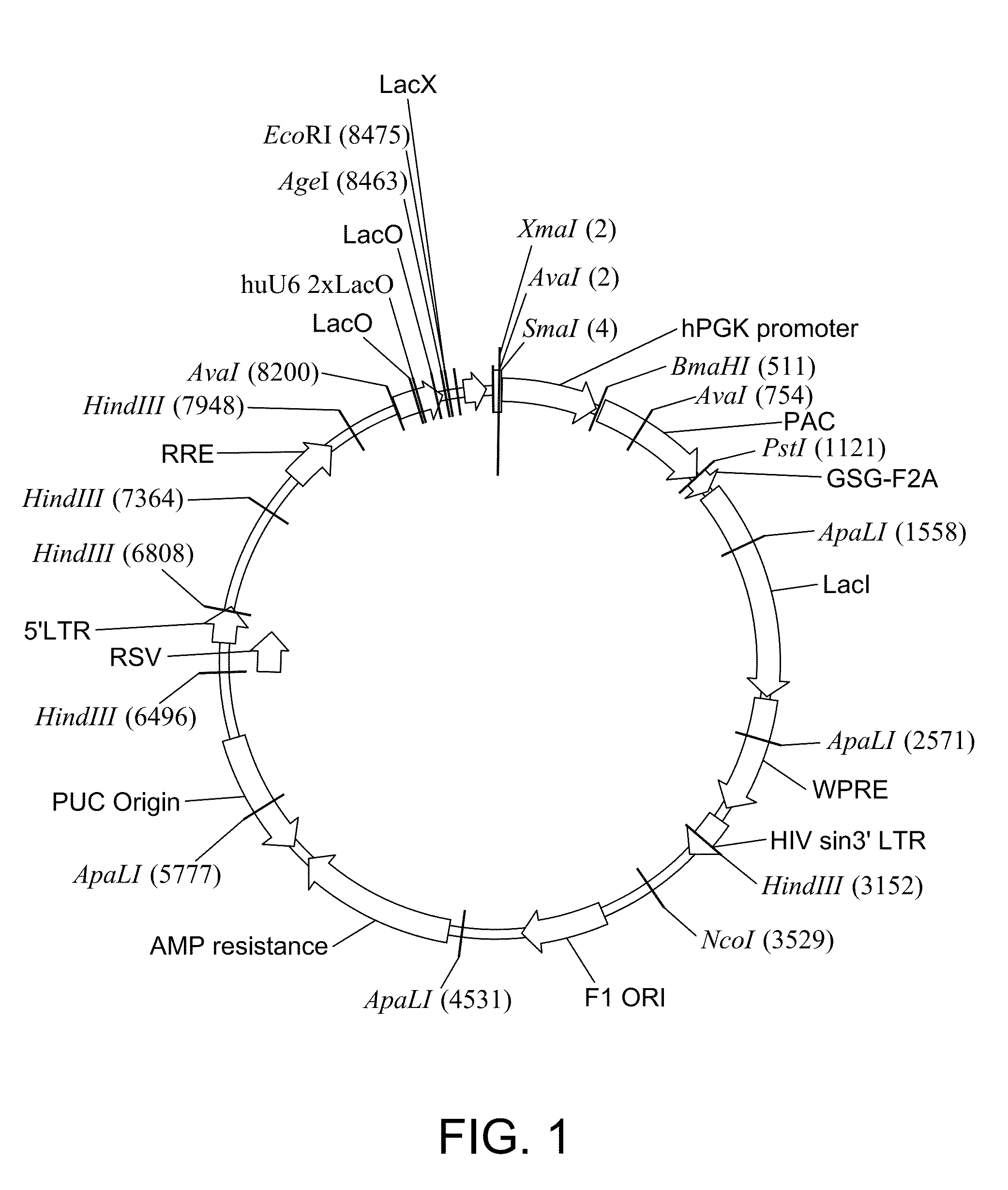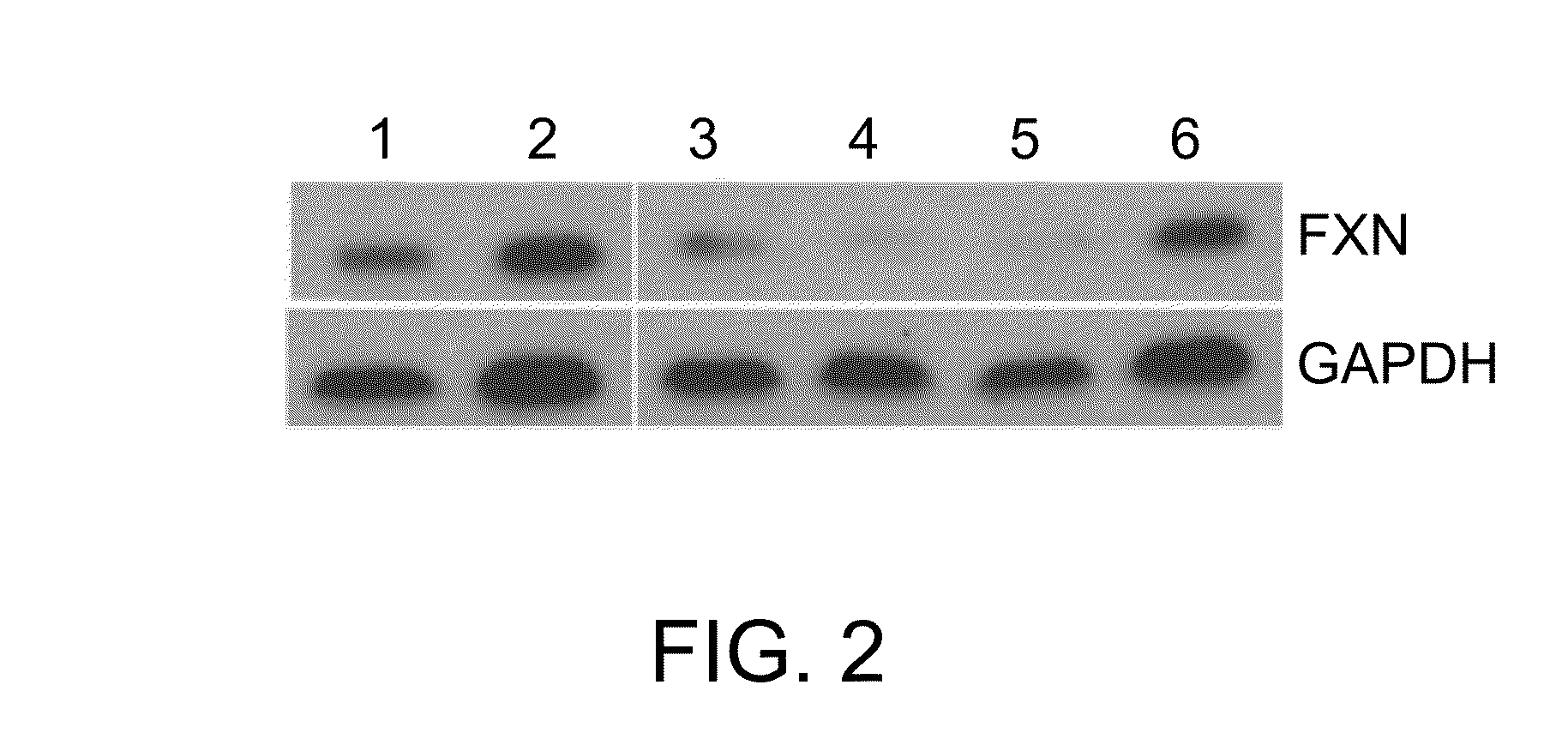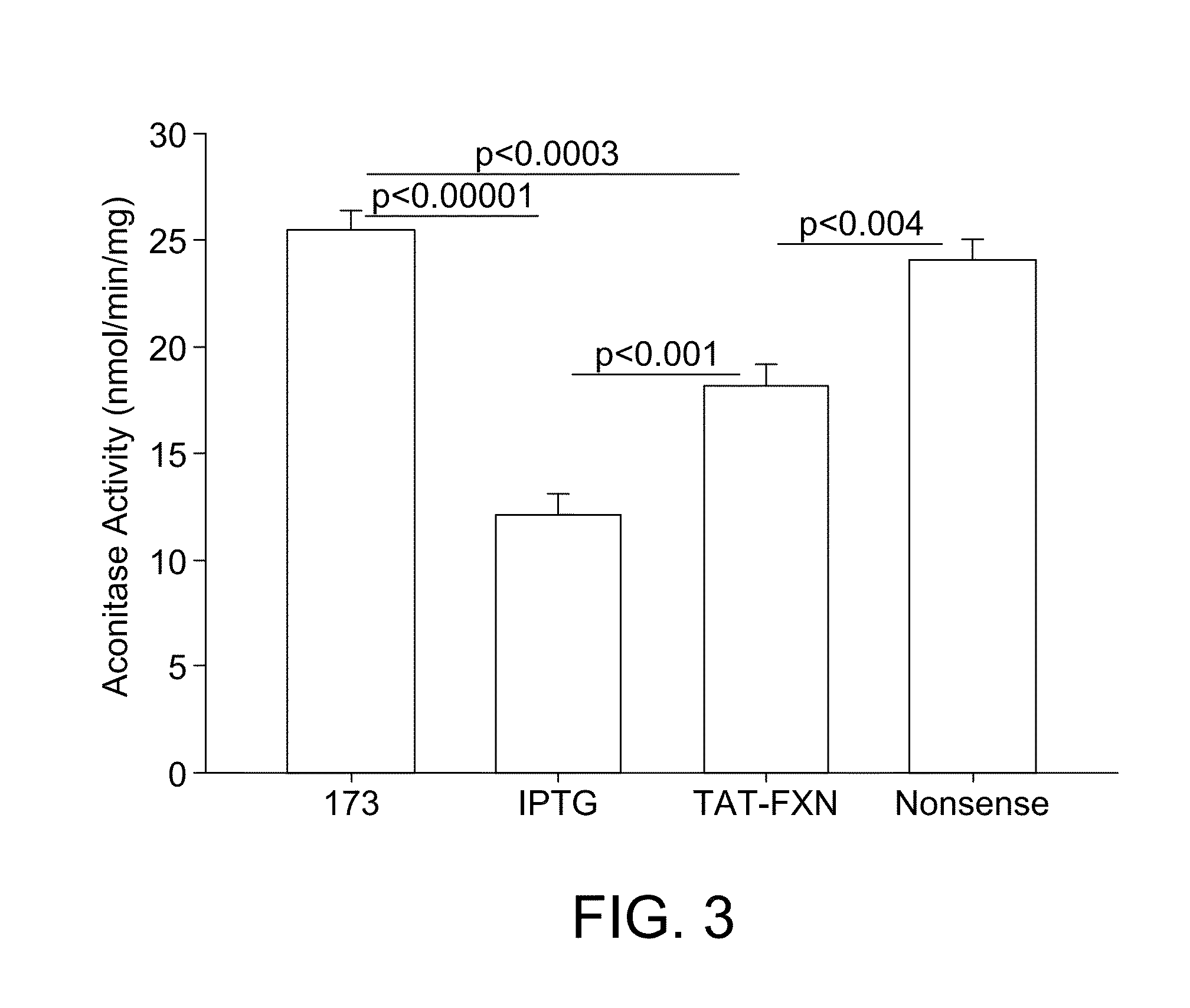Inducible cell-based model for the study of Friedreich's Ataxia
a cell-based model and ataxia technology, applied in the field of cell-based models exhibiting metabolic characteristics of friedreichs ataxia, can solve the problems of pathological deficiency, impaired transcription of the fxn gene, and compromise both cellular respiration and overall mitochondrial function
- Summary
- Abstract
- Description
- Claims
- Application Information
AI Technical Summary
Benefits of technology
Problems solved by technology
Method used
Image
Examples
example 1
[0052]In this Example, the production of the shRNA FXN expression vector is described.
[0053]The inducible expression vector for the knockdown of frataxin mRNA was designed by analyzing the frataxin mRNA sequence. SEQ ID NO: 1 (GACTTGTCTTCATTGGCCTAT), SEQ ID NO: 2 (GAGTTCTTTGAAGACCTCGCA) and SEQ ID NO: 3 (CCTCCAGATTCTGAACATCAA) were identified as possible target sequences for shRNA knockdown and custom cloned as lentivirus particles (Sigma Aldrich, St. Louis, Mo.). The three sequences were custom cloned into the pLKO-puro-IPTG-3xLacO vector, which expresses the shRNA product under the control of a Lac operator mechanism and was modified in a manner that made it inducible, in a dose-responsive fashion, using IPTG (see, FIG. 1).
example 2
[0054]In this Example, the development of the inducible cell line is described.
[0055]Mouse C2C12 myoblast cells were stably transduced with the letiviral construct described in Example 1. The expressed shRNA targeted the frataxin gene mRNA transcript in the cells and lead to its precise, selective degradation. Degradation of the mRNA transcript resulted in the reduction of frataxin protein levels in the cell as a whole. In biochemical assays, the reduction or loss of frataxin protein yielded a phenotype mimicking FRDA in animal models and humans.
[0056]C2C12 cells were grown in 96-well plates in the presence of hexdimethrine (8 μg / ml) to a confluence of 70%, and lentiviral particles were added. A multiplicity of infection (MOI) of 0.5, 1, and 5 were observed for efficacy. Media was changed 18 hours post infection. On Day 4, puromycin (1.6 μg / ml) was added to select for successful transduction. Surviving cells were seeded in new wells at single colony density under puromycin selection...
example 3
[0058]In this Example, the efficacy of cell line 173 for use as a candidate therapeutic agent screening tool is described.
[0059]IPTG-induced 173 cells were treated with TAT-Frataxin. TAT-Frataxin rescues the animal model of FRDA. As shown in FIG. 3, TAT-Frataxin treatment of IPTG-induced 173 cells substantially and significantly improved aconitase activity.
[0060]The IPTG-induced 173 cells also report on protein acetylation in FRDA, which is a novel mitochondrial finding in FRDA (Wagner, et al, Human Molecular Genetics, 2012). 173 cells were induced with IPTG for 10 or 14 days. Whole cell homogenate was separated by SDS-PAGE and transferred to nitrocellulose for immunoblotting with an anti-acetyl antibody. Signal from anti-acetyl antibody was normalized to protein loading. As shown in FIG. 4, a substantial and progressive acetylation of proteins was observed with the loss of FXN.
[0061]Advantageously, the stable cell line of the present disclosure exhibits FRDA characteristics in an i...
PUM
| Property | Measurement | Unit |
|---|---|---|
| isopropylthio-β-galactoside | aaaaa | aaaaa |
| size | aaaaa | aaaaa |
| energetic stress | aaaaa | aaaaa |
Abstract
Description
Claims
Application Information
 Login to View More
Login to View More - R&D
- Intellectual Property
- Life Sciences
- Materials
- Tech Scout
- Unparalleled Data Quality
- Higher Quality Content
- 60% Fewer Hallucinations
Browse by: Latest US Patents, China's latest patents, Technical Efficacy Thesaurus, Application Domain, Technology Topic, Popular Technical Reports.
© 2025 PatSnap. All rights reserved.Legal|Privacy policy|Modern Slavery Act Transparency Statement|Sitemap|About US| Contact US: help@patsnap.com



